| Section 13: The Civil War era | Previous Section | Main Menu | Next Section |
| Both Union and Confederate governments issued paper money to fund their war efforts, much like the Continental Congress had done in 1775. As before, issuing too much paper money caused inflation. | ||
| Union and Confederate governments both issued notes | ||
 $1 Confederate note, 1864 |
 $10 Confederate note, 1861 |
 $500 Confederate note, 1864 |
 United States note, 1862: A “legal tender note” |
 $5 demand note, 1861: A “greenback,” front |
 $5 demand note, 1861: A “greenback,” back |
| The Union government established national banks | ||
 $1 note of First National Bank of Chelsea, Vermont |
 $20 note of Lowry National Bank of Atlanta |
 $20 note of Andalusia National Bank, Andalusia, Alabama |
| The use of deposit money got an unintended boost | ||
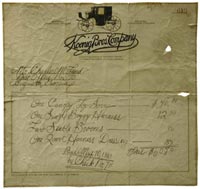 Receipt |
 Check |
|
| Earning interest made these notes more acceptable | Stamps as small change | |
 Compound-interest-bearing $10 Treasury note, 1864 |
 Interest-bearing $10 Treasury note, 1864 |
 Encased postage stamp |
| Paper money filled the gap | ||
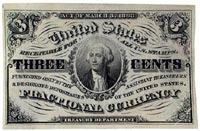 3¢ fractional note |
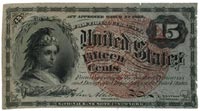 15¢ fractional note |
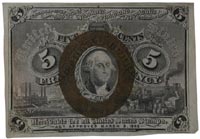 5¢ fractional note |
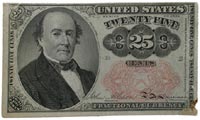 25¢ fractional note |
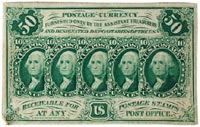 50¢ postage note |
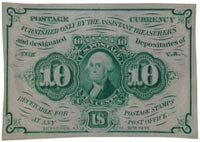 10¢ postage note |


